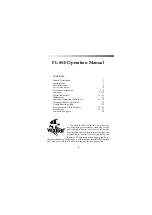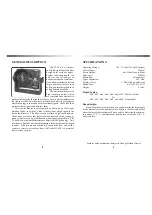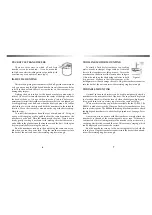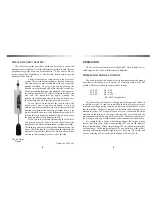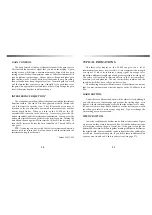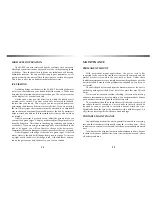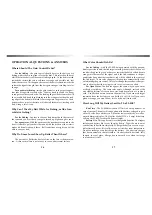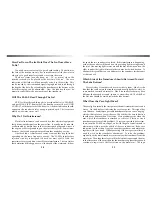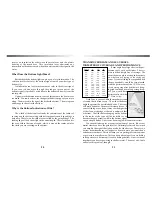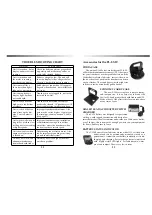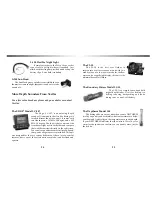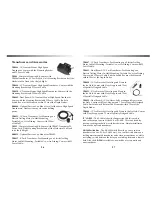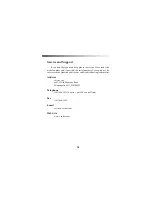
4
5
INSTALLATION
To make the FL-8SE work, you must provide the unit with power
and mount the transducer in an appropriate location.
UNIT INSTALLATION
Find a convenient place to
mount the unit. This may include
a boat seat, deck, dash, or a
portable case. Make sure that there
is plenty of room for the unit to tilt
and/or swivel freely without the
cables binding behind the unit.
Once you have found a spot,
remove the unit from the gimbal
bracket. Securely attach the brack-
et to the mounting surface.
POWER CONNECTION
Plug the flat 3 pin connector into the back of the unit. Find the
closest source of 12 volts and run the cord to it. Keep the cord away from
sharp metal edges and avoid tight places where the cord may get crushed.
Connect the red wire to positive and the black wire to negative or ground.
If the cord provided is not long enough, more can be added. Use 18 gauge
wire minimum. It is recommended that a 1 amp in-line fuse be placed
in the positive line as close to the power source as possible to protect
against any shorts in the wiring.
TRANSDUCER INSTALLATION
There are three basic types of transducers to consider: High Speed,
Puck Style, and the Ice-Ducer System.
HIGH SPEED TRANSDUCERS
When choosing an area to mount the
transducer, keep in mind that you need
clear water flow across the face of the
transducer to insure a clear reading at all
speeds. Try to stay away from rivets, ribs,
or strakes that would be just in front of
the transducer. They can disturb the
water and scramble the reading.
With the mounting bracket attached to
the transducer, hold it up to the boat
where you are planning to mount it.
Mark the holes on the transom, or
mounting plate, so that when the bottom
of the transducer is flush with the bot-
tom of the boat the holes are located at
the bottom of the bracket slots. This gives
you room to "fine tune" the position of
the transducer and optimize your
reading after you've put the boat in the
water. Ideally, the transducer should be
just under the bottom of the boat. However, you may need to lower it
1/2” to 5/8” to get a clear reading at top speed.
Drill out the holes and tighten the bracket to the hull securely. Be sure
to seal any holes drilled into the transom with silicone to prevent water
from leaking into the boat. Give the transducer a slight tilt downward so
that the back is about 1/8” lower than the front. Tighten the bracket screws
and nuts securely. Run the transducer cord up to the unit. Plug the
transducer connector into the back of the unit and screw the retaining
ring down snugly
Figure E

